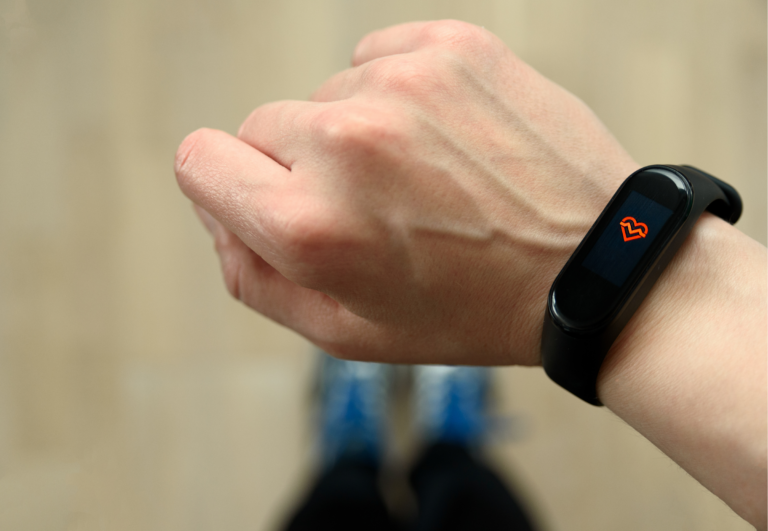Balancing Rest and Activity in Post-Run Recovery: Optimal Strategies for Athletes
Recovery is as crucial as the run itself. As a UESCA certified running coach, I’ve seen many runners underestimate the importance of post-run recuperation. It’s the time when muscles repair, energy stores replenish, and the body adapts to the stresses of running—leading to progress and performance gains. Ignoring this can lead to burnout and injury.
Managing the balance between rest and activity after a run is an art. Active recovery strategies, like a gentle walk or a leisurely bike ride, can enhance circulation, helping in the delivery of nutrients to sore muscles and speeding up the recovery process. It’s beneficial to couple these with complete rest, focusing on quality sleep to facilitate muscular repair and hormonal balance.
Nutrition also plays a pivotal role in post-run recovery. Feeding your body with the right combination of proteins and carbohydrates will help restore glycogen stores and repair muscle tissues. Hydration, too, cannot be overlooked; rehydrating effectively after a run replaces lost fluids and aids overall recovery. As a UESCA certified running coach, my recommendation is to create a personalized recovery plan that aligns with your unique running schedule and intensity.
Balancing Rest and Activity in Post-Run Recovery
After an invigorating run, it’s crucial to prioritize post-run recovery to prevent injury and enhance overall performance. This recovery phase is about more than just stillness; it involves deliberate actions to ensure muscles repair and rejuvenate efficiently.
Recovery Phases
The process of recovery consists of several phases, beginning immediately after my run. During the initial phase, my focus is on reducing muscle inflammation and addressing any areas of discomfort that could lead to injury.
This involves cooling down with gentle movement and starting rehydration to restore fluid balance. Subsequently, repairing tissues and replenishing energy stores take the forefront in the hours and days following the workout. A comprehensive approach encompasses these steps to effectively ready the body for its next bout of activity.

Importance of Rest Days
Rest days are not simply time off; they’re an integral component of a runner’s training regimen. They allow for deep muscle repair and systemic recovery.
I inform my runners that taking periodic rest days helps prevent overuse injuries and mental burnout. Strategic rest promotes long-term health and performance improvements by giving the body’s systems the necessary time to restore fully.
Active Recovery Essentials
Active recovery is engaging in low-intensity exercise to facilitate blood flow to muscles, which in turn aids in the removal of waste products and delivers nutrients needed for repair.
Activities like walking, cycling, swimming, or yoga on rest days or after runs can help rejuvenate the body without imposing undue stress. The key is to keep intensity low; this is not the time to challenge the body but to help it heal. Following an active recovery protocol, I’ve noticed an improvement in both my own and my runners’ overall performance and wellbeing.
Nutrition and Hydration
Proper nutrition and hydration are crucial for effective post-run recovery. My vast experience as a UESCA certified running coach shows that timely intake of proteins and carbohydrates, along with adequate hydration, is essential for replenishing lost nutrients and promoting muscle repair.
The Role of Protein
After a run, protein is vital for repairing muscle tissues and stimulating muscle growth. Consuming 20-25 grams of high-quality protein within a 30-minute window post-run can maximize recovery. A protein shake or a serving of Greek yogurt can be effective options to start the repair process.
The Importance of Carbohydrates
Carbohydrates are the primary fuel for runners and are essential for restoring glycogen stores. A recovery meal should aim to provide 1.2g per kg of body weight of carbohydrates. Opting for easily digestible carbs such as a banana ensures quick glycogen replenishment.
Hydration and Electrolytes
Rehydrating after a run is non-negotiable. Aim to drink fluids, including water or a sports drink, to replace lost fluids. Electrolytes like sodium, found in most sports drinks, aid in maintaining fluid balance. An estimate of 150% of body weight lost in fluids should be consumed post-run to ensure proper rehydration.
Injury Prevention and Management
Injury prevention and management are crucial for runners to maintain consistency in training and avoid time off due to injury. The core of effective prevention lies in recognizing common injuries and using appropriate strategies, such as stretching and foam rolling, to mitigate potential risks.
Recognizing and Treating Common Injuries
In my experience as a running coach, I’ve found that listening to your body is essential in identifying the onset of running injuries. Here are some common running injuries and their treatment options:
- Iliotibial Band (ITB) Syndrome: Reducing mileage, applying ice to the affected area, and stretching can alleviate ITB-related discomfort.
- Achilles Tendon Injury: Rest, ice, and anti-inflammatories can help, but consult a medical professional if pain persists.
- Hamstring Injuries: Allow for adequate rest followed by gentle stretching and strengthening exercises.
- Calf Muscle Injury: Rest, gradual strengthening, and stretching are key to recovery.
Preventing these injuries starts with monitoring your pain levels and adjusting your training accordingly to address muscle imbalances and overuse before they become larger issues.
Role of Stretching and Foam Rolling
Stretching:
- Importance: Regular stretching can improve flexibility and range of motion, which are vital for reducing the risk of injuries.
- Routine: Incorporate both dynamic stretches before a run and static stretches afterward to cool down effectively.
Foam Rolling:
- Function: Using a foam roller helps to reduce muscle soreness and inflammation, serving as a form of self-myofascial release.
- Practice: Aim to foam roll before stretching to warm up the muscles, focusing particularly on tight areas to relieve tension and promote muscle recovery.
Balancing stretching and foam rolling can aid in addressing tightness and muscle imbalances, which are often precursors to more serious injuries if left unmanaged. By incorporating these practices into your routine, you are taking proactive steps towards injury prevention and ensuring more resilient running.
Sleep and Recovery Strategies
Sleep and effective recovery techniques are essential for athletes to repair muscles and mitigate soreness after running. Let’s explore proven strategies for optimizing sleep quality and employing recovery methods beneficial for any post-run routine.
Maximizing Sleep Quality
As a UESCA certified running coach, I prioritize sleep in my training regimes, knowing it’s pivotal for muscle repair. For athletes, 7-9 hours of sleep is recommended, but runners may need more to facilitate optimal recovery. Here’s how to maximize sleep quality:
- Consistent Sleep Schedule: Commit to a regular bedtime to regulate your body’s clock.
- Sleep Environment: Ensure a dark, cool, and quiet room to encourage deep sleep stages.
- Pre-Sleep Routine: Engage in relaxing activities such as reading or light stretching to signal your body it’s time to wind down.
Recovery Techniques
Post-run recovery is multifaceted, comprising various techniques to alleviate muscle soreness and prepare for the next session:
- Cooling Down: A gentle jog followed by walking helps regulate heart rate and breathing.
- Recovery Drink: Hydrate with a balanced recovery drink to replenish lost fluids and electrolytes.
- Recovery Shoes: Slip into recovery shoes to reduce foot stress and support arches.
- Ice Bath: Occasionally, take an ice bath to reduce inflammation and speed up recovery.
- Massage: Regular sports massages can ease muscle tension and promote circulation.
- Yoga: Incorporate yoga sessions to improve flexibility and reduce muscle stiffness.
- Rest: Don’t neglect rest days; they are crucial for allowing muscles to recover fully.
Employing these strategies as part of your recovery after running is paramount to maintaining performance and preventing injury.
Adapting Training for Recovery

Integrating rest with appropriate physical activity is essential for maximizing running performance and avoiding overtraining. Here, I’ll discuss structuring training to endorse recovery and recognizing when your body is ready for more challenge or needs more rest.
Balancing Workouts and Recovery
The equilibrium between training stress and recovery must be respected to heal and enhance endurance. A strategic approach involves:
- Rest Days: Dedicate at least one day per week as a recovery day to allow muscles to repair.
- Varied Intensity: Alternate hard workout days with easy runs or cross-training to prevent fatigue accumulation.
- Recovery Weeks: Every 3-4 weeks, reduce mileage and intensity to facilitate deeper recovery.
With these strategies, you manage the load on your sympathetic system, which governs the “fight or flight” response, and support the parasympathetic system, which aids in rest and digestion, enhancing overall exercise recovery.
Understanding Body Signals
Listening to my body is imperative to regulate training:
- Fatigue Levels: Persistent tiredness or a lack of motivation can indicate the need for more rest.
- Performance Metrics: A sudden drop in running performance is often a sign of overtraining.
Monitoring these signals enables the calibration of training intensity and volume. By doing so, calories are efficiently used for repair and adaptation, helping you to come back faster and stronger after each training session.
Advancing Running Performance
As a UESCA certified running coach, I guide athletes to enhance their running performance by balancing rest with effective training strategies. Mastery of this balance is pivotal for extracting full potential from each run, whether it’s a daily jog or a marathon.
Long-Term Recovery Planning
My long-term recovery plans for runners center around restoring glycogen stores and repairing muscle fibers to build a stronger athlete. Key elements include:
- Nutrition: Consuming complex carbohydrates and proteins post-run aids in replenishing glycogen and repairing muscles.
- Sleep: Quality sleep is crucial for the nervous system’s recovery, reducing heart rate, and stabilizing blood pressure.
- Active Recovery: Low-intensity activities improve circulation, aiding in the removal of lactic acid and reducing soreness in primary running muscles, such as calves and quads.
Integrating Recovery into Training Regimens
To optimize recovery in training, I focus on:
- Hydration: Preventing dehydration is non-negotiable. I advise monitoring hydration levels both during and after runs to support energy efficiency and blood volume.
- Stretching: A disciplined stretching regimen, including a hamstring stretch, maintains muscle elasticity and minimizes injuries.
- Periodization: Athletes should alternate high-intensity workouts with easier sessions to allow the body to recover without losing fitness gains.
Implementing these strategies allows runners to recover fully, which in turn can enhance their performance significantly.






![Is Running in the Heat Good for You? [4 Helpful Benefits & 3 Dangers]](https://yournext.run/wp-content/uploads/2022/12/is-running-in-the-heat-good-for-runners_featured-768x512.png)